#legend of exorcism icons
Text


















⠀ ꗃ sieartlery posted: legend of exorcism ☆ ͡
#sieartlery#spirit fanfics#spirit icons#icons spirit#120x120#icons 120x120#wonwobirta#gallery#120x120 icons#donghua#donghua icons#legend of exorcism#legend of exorcism icons#legend of exorcism donghua#legend of exorcism donghua icons
20 notes
·
View notes
Text
#ted lasso for dummies
Intro Part 1
01×02 Biscuits
00:00:22 'Nestlé Shredded wheat'*
*This stuff is for real - Whole Grain Wheat Cereal Biscuits. These type of breakfast food are not in shape of liked by everyone little squares, loops, balls or stars. These are fucking food BRICKS. So I really share Ted's shock.

00:02:37 'The Spice Girls.'*
*It's like my childhood all over again. Phrase 'girl power' it's about them, about Spice girls, well-known and beloved all over the world british girl group. Scary Spice, Sporty Spice, Baby Spice, Ginger Spice, Posh Spice! P.S. Plus one of them is wife of football player, former captain of the England national team - David Beckham 😎. So, the theme of football is also present in this conversation between Ted and Rebecca.
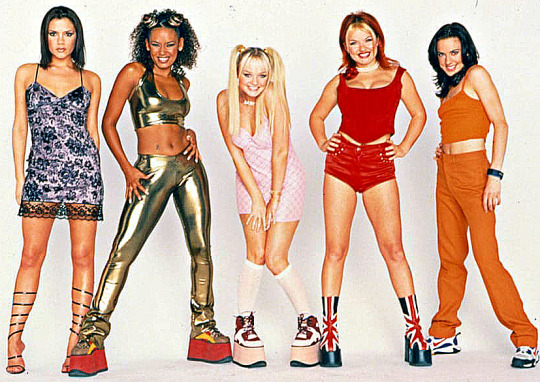
00:02:45 'The Gambler himself, Mr. Kenny Rogers'*
*So, here Coach Lasso introduces us to the specific work (song The Gambler) of an American musician (Kenny Rogers). Erm, I must admit that I googled this guy, he and his work were not popular in my country. But this song definitely have Ted Lasso vibe, maybe because of country notes which take us to Kansas - homeland of our coach 🤠.
00:04:30 'We're gonna call this drill The Exorcist, because it's all about controlling possession.'*
*Only Ted could compare football strategy with the demonic possession of a young girl and her mother's attempt to rescue her through an exorcism by two Catholic priests, depicted in classic American horror movie 😬.

00:06:15 'Boy George.'*
*And another one musical icon from GB. You will recognize him by his soulful voice and his androgynous appearance, large hats and bright make-up.
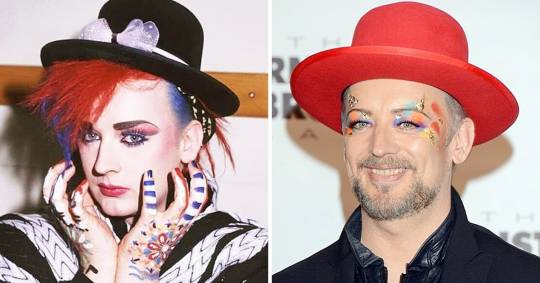
00:12:05 'Best concert, we got Beastie Boys.'*
* Yet another legend in musical industry from America. Beastie Boys are considered very influential in both the hip hop and rock music scenes, with 7 platinum albums and over the top sales in rap genre.
00:12:09 'Actually, did y'all get the O.J. trial over here?'*
*And another one football related topic: the case against O. J. Simpson, a former National Football League (NFL) player, broadcaster and actor, acquitted for the murders of his ex-wife and her friend. However, Ted somehow randomly mentions this case in a conversation with Rebecca and Higgins.

00:14:10 'And if we were the Rolling Stones...'*
*I must say it's some musical episode! Jamie's comparison of himself to Mick Jagger and Roy to Keith Richards is just gold, but partly accurate! The Rolling Stones - british rock band with over six decades history. Jagger and Richards are the same age, but yeah former one is a front man and latter is like in background, just like our fellas on football pitch.
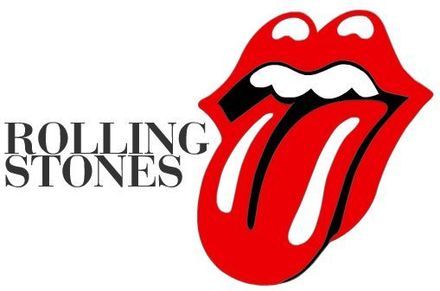
00:15:19 'Ernie Lounds, The Sun'*
* The Sun is bright example of fake media. Among brits it's known for spreading lies about various topics: government, celebrities etc. And football related fact: 'In Liverpool they hate the Sun because of the Hillsborough disaster. Liverpool is a great City proud of their football team. The Hillsborough disaster involved the horrible death of many football fans. The cause was bad policing and the collapse of a terrace at a football match. The Sun blamed the Liverpool fans and spoke all of the dead'

00:16:56 '... the best barbecue sauce in Kansas City.'*
* Oh man, Americans and their love for all things barbecue! BBQ is just like national sport for them, witch will be not fully experienced without good BBQ sauce. Ted's favorite:
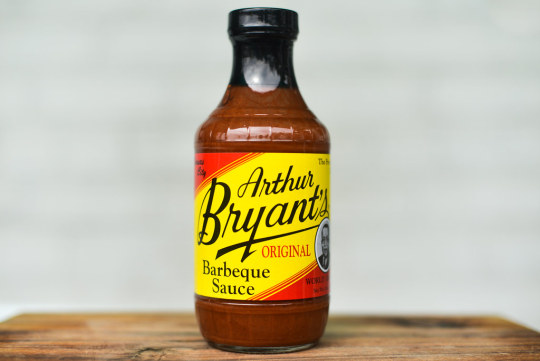
00:25:05 'Little Phife Dawg and Q-Tip comin' at you'*
*Once Phife Dawg and Q-Tip, were members of the music group - A Tribe Called Quest, which split up because of creative tensions between former and latter, who were both vying for greater control of the group's direction. And I personally think that this life story greatly illustrate the current situation in FC Richmond.
#Spotify#ted lasso for dummies#ted lasso apple tv#ted lasso#coach lasso#coach beard#roy kent#jamie tartt#leslie higgins#rebecca welton#keeley jones#richmond till we die
6 notes
·
View notes
Text
A Fable Narrative of Archetypes
Mother Archetype
The mother archetype had its origins in the cult of the Indus Valley civilization. She is portrayed with abundant hips and breasts and she was worshipped as a fertility Goddess. The people there celebrated the magic of sexuality.
So also there were celebrations for fertility and sexuality which was prevalent in Greece. The Greeks did orgies in the Bacchanalian revels and celebrated sex through the ritual of the Maenads. There was an ecstasy of worship with booze, sex and altered states of consciousness.
With the advent of Christianity, the cult of the Mother Goddess centered on the worship of Virgin Mary. All the vices of the ancient civilization were chastised. The mother goddess became a symbol of veneration, piety, purity and she is an icon of the immaculate.
With the advent of Freud the Mother Goddess became the symbol of his misunderstood oedipal complex. The Oedipal complex for Freud was a fetish felt by the child to the mother with a repulsion of the father. I don’t in anyway adhere to Freud’s oedipal complex as children develop emotional and mental bonding with their parents. There could be a possibility that Oedipal complex in the later stages of life could be seen as a romance of a person with another person as a persona of similarity with the mother.
Father Archetype
The Father archetype developed in ancient Greece and Gods were symbolic of machismo, male ego and Gods were celebrated with waywardness, profligacy, promiscuity, drunkenness and so on. Let me take the case of Bacchus or Dionysus. Bacchus was a God of booze, sexuality, orgies, and he is an archetype of pagan ecstasy. Life for the Greek father archetype was one of pleasure and celebration. The Greeks were fertility freaks. Their Gods were permissive and liberal. Sin had no say in the Greek pantheon.
With the coming of Judaism: the concept of the Father archetype changed to Jehovah who was an omniscient, omnipresent, omnipotent God. He was strict, authoritarian God and loose morals had no place in his cannon. The Judaic God punishes the wicked and rewards the people without blemish. Judaism is a religion of absolutism and authoritarianism. Humans were considered as people who are inferior to God.
With the coming of Christ, the concept of God changed to grace theology. And grace theology is the redemption of man from the clutches of sin and Christ sacrificed his life for us by dying on the cross and shedding his blood. The concept of sin being forgiven is also a tenant of Christianity. Christians were needed to have faith and belief in God. Christ became an icon of a humane, tolerant God.
Then the Father archetype underwent a change in the modern era. The father God became the God father archetype. The God father archetype is reminiscent of ruthlessness, criminality, authority and violence. God father archetype became a legend in popular media and culture.
The Lover Archetype
The lover archetype had its origins in ancient Greece and was symbolically portrayed as Cupid, Aphrodite and Venus. The lover archetype has not changed much and is popular in social media and culture. Cupid is the symbol of wooing and in modern culture lovers go through an intense period of courtship. Aphrodite and Venus are emblems of amorousness and passion and ecstasy. Love is celebrated as a transcendental rite of togetherness.
Archetype of the Warlock/Wizard
The archetype of the warlock wizard had its beginnings in magic, sorcery and mysticism. It was characterized with magic, spells, rituals and incantations. The archetype of the warlock/wizard can be described bringing to awareness positive realities. It’s a gnostic fable of mental exorcism and mental cleansing. The warlock/wizard is celebrated in popular culture, cinema and fiction. Now it has become a legend of entertainment.
During the middle ages there occurred a transition of the warlock wizard to that of bishops, episcopy and priests. The priests were a class of people who did Christian rituals and sacrifices. Magic and its activities became a taboo. Christianity curtailed the modes operandi of pagan religions. Pagan religions were viewed as being sinister and diabolic.
Then again the archetype of the warlock/wizard changed with development of man’s intellect. The change is the manifestation of the development of thought and its prevalence in thinkers and philosophers. They became the runners of ideas. The philosophers developed an taboo towards ritual, magic and religion. Truth became a paragon of a Socratic debate. Philosophers brought in ideas to the mainstream culture.
Archetype of the Witch
Again a witch in pagan religions was a person who did witchcraft, practiced occult, did divination and magic. The witch is a spell of the earth’s magic. She is a cauldron of enigma.
With the advent of Christianity, witches became condemned and many were executed as they were considered as evil, fiendish and diabolic. From admiration of Pagan religions the norm of witches changed to persecution in Christian religion.
In the modern era witches are celebrated as symbols of feminity. Books like JK Rowling’s Harry porter have celebrated the existence of witches. The witch has become an archetype of a feminist celebrity. Witches are a sin qua non of popular culture, fiction, music and movies. The witch has become a philosopher contributing the idea of the ideal feminine.
The Fool Archetype
The fool in ancient periods was used in courts to provide entertainment to the royalty. Fools were professionals employed by the King.
During the medieval period the notion of the fool was used in Shakespearean dramas who uttered nonsense but in fact there were wisdom nuggets. The fool bridged the gap between sanity and insanity.
During the time of Cervantes the fool underwent a remarkable transition through the character of Don Quixote. Don Quixote’s madness was in fact a tool to convey freedom, dissent and liberty against the organized papacy and authoritarianism of Catholicism.
Again the fool in postmodernism is romanticized as a hero, who fosters individual eccentricities and the one who celebrates the meaning of life. Chivalry in postmodernism connotes individual freedom and passion. Don Quixote is an existential hero who valorises the catharsis of individuation. There is a Don Quixote in all of us.
#Archetypes#Mother Archetype#Father Archetype#Lover Archetypes#Archetype of the Warlock Wizard#Fool Archetype#Literature#Art#Aesthetics#Drabble#Flash Fiction#Philosophy#Literary theory#Postmodernism
0 notes
Text






Tianbao Fuyao Lu: icons
🔻120x120
🔺 donghua tianbao Fuyao Lu
🟠 Extras:




#tianbao fuyao lu icons#tianbao fuyao lu#chong ming#mo rigen#kong hongjun#donghua icons#donghua#qing xiong#qiu yongsi#legend of exorcism icons#li jinglong#legend of exorcism
42 notes
·
View notes
Text


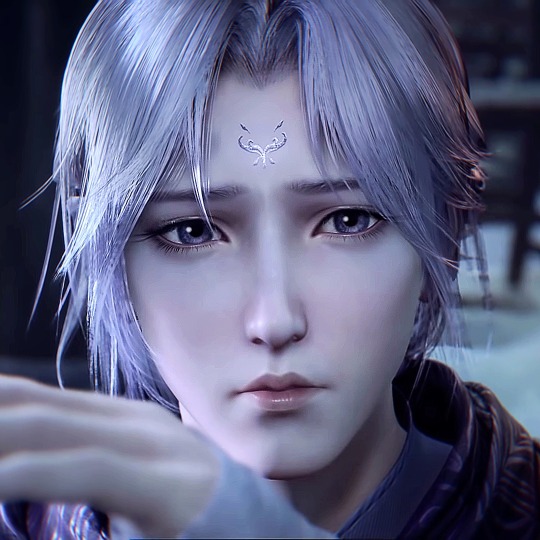


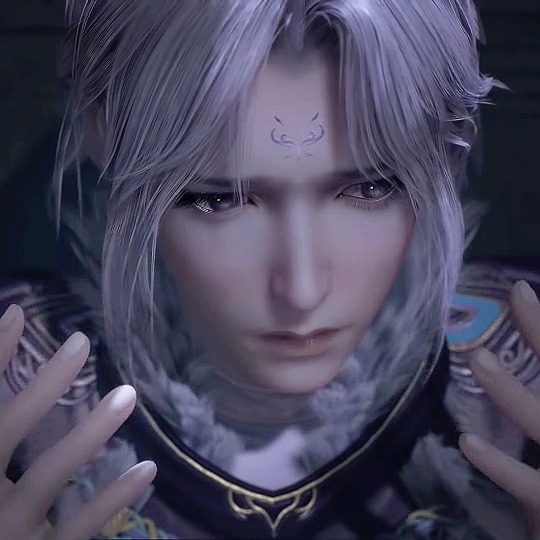
309 notes
·
View notes
Text
╚ »Kong Hongjun & Li Jinglong « ╝






Original
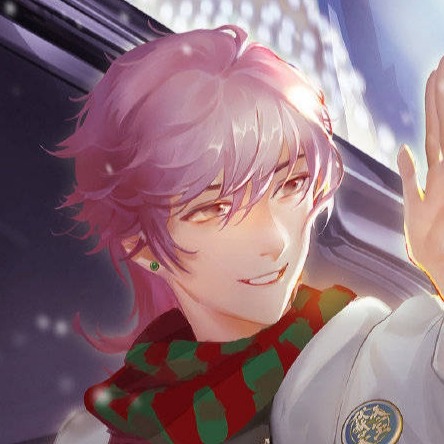
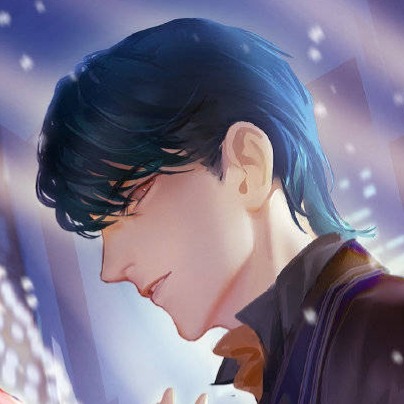
• ─ 💌 Match icons
#longjun#kong hongjun#li jinglong#longjun icons#longjun donghua#feitian#fei tian ye xiang#danmei#legend of exorcism#legend of tang#tianbao fuyao lu#tianbao#tianbao donghua#match icons
104 notes
·
View notes
Text
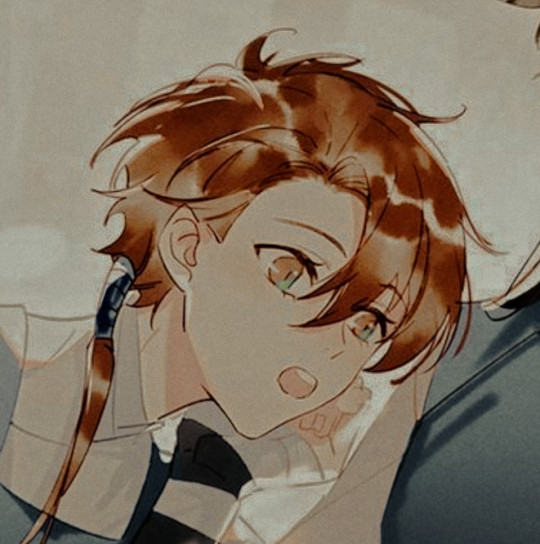
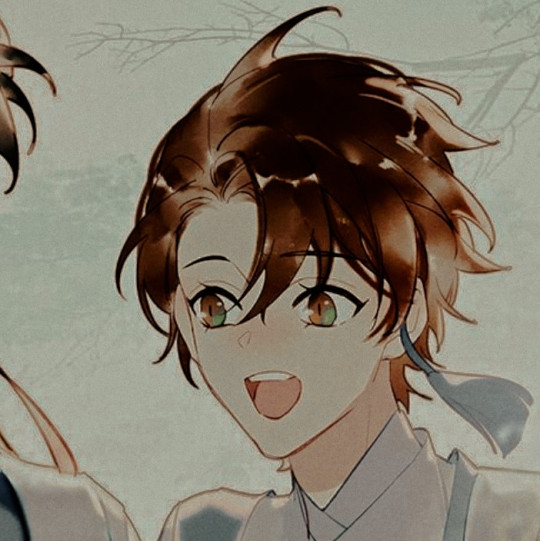




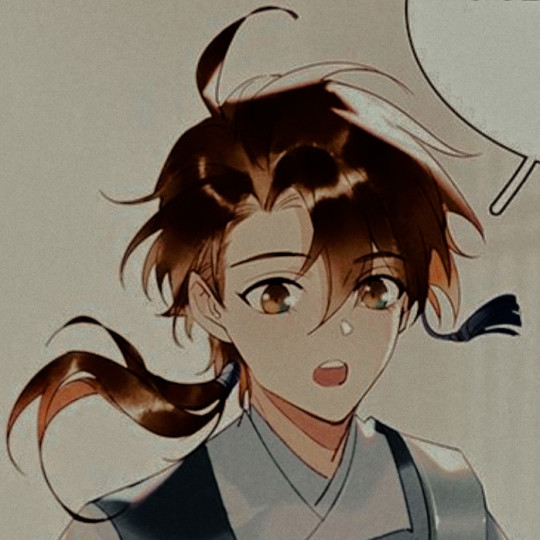


Kong Hongjun
-—Kong Chouxing—-
#icons#manhua#danmei#tian bao fuyao lu#tianbao fuyao lu#tbfyl#legend of exorcism#kong hongjun#kong chouxing#manhua icons#aesthetic icons
38 notes
·
View notes
Text


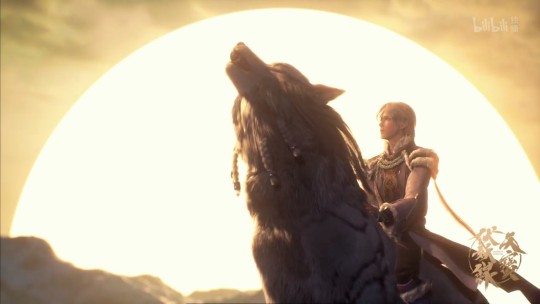


103 notes
·
View notes
Text
MUSE AESTHETICS / HORROR EDITION .
( repost, don’t reblog / bold whatever applies / tag however many people you want / feel free to add stuff in any category, too! )

gothic horror. gaslights. corsets. ballrooms. candlelight. mist. starless nights. full moons. cobbled streets. horse-drawn carriages. mysterious strangers. bogs. moors. forests. mountains. castles. velvet. silver. brass. gold. jewels. domino masks. the opera. dangerous romances. tragic romances. violins. roses. lilies. empty graves. crosses. cemeteries. snow. ice. the gallows. crows. milk-white skin. ambiguous illness. fangs. pointed nails. something howling in the night. capes. gloves. top hats. straight razors. lightning. pipe organs. underground caverns. bats. mice. rats. ravens. cats. pearls. attics. talismans. axes. wood. isolation in a room full of people. vampires. werewolves. ghosts. coffins. western europe. eastern europe. bones. churches. catacombs. mausoleums. spiders. books.
classic horror. black and white. powder puffs. red lipstick. winged eyeliner. white kitten heels. black lace lingerie. icy blue eyes. rain. abandoned cars. skeletons. acid. poison. voyeurism. switchblades. strangling. overcoats. looking over your shoulder. trans-atlantic accents. private detectives. dinner parties. haunted mansions. alcohol in glass decanters. cobwebs. perfect blonde curls. kitchen knives. shock. cellars. dust. dark alleys. empty streets. driving at night. horn-rimmed glasses. radiation. zombies. serial murder. paranoia. the city. witches. the devil. cannibalism. conspiracies. amulets. abject terror. the american south. the american northeast. england. analog cameras.
slashers. bloodbaths. massacres. wanton nudity. newspapers. leather jackets. letterman jackets. converse sneakers. obscured faces. social unrest. bonfires. lakes. babysitters. suburbia. high school. lockers. dead leaves in the fall. jack-o’-lanterns. outdated television sets. nightmares. psychiatrists. hospitals. unstoppable forces. gunfire. police. landline telephones. household objects turned into improvised weapons. halloween. secrets. revelations. character masks. scrunchies. wild curls. jeering children. parties. fire. swearing. revulsion. california. the american midwest. ambulances.
paranormal horror. malevolent spirits. seances. spells. missing bodies. hidden graves. white noise. static. flickering lights. rings of salt. demons. poltergeists. dark histories. old buildings. cold air. mausoleums. wells. urban exploration. a dog barking at something you can’t see. black ooze. old photographs. faces you can swear you’ve seen before but can’t for the life of you figure out where. dark bodies of water. crucifixes. priests. possession. exorcisms. dolls.
cryptid & urban legend horror. aliens. blinding light. dark woods. driving at night. claw-marks. bite-marks. men in black. memory loss. dismembered bodies. sewers. flashlights. cell phones. video cameras. cars with tinted windows. abandoned houses. unlabeled cassette tapes. bugs. big cities. urban crimes. clowns. something rustling outside your window. glowing light. unsolved mysteries. suburbia. mirrors. the american pacific northwest. the american midwest. hiking / backpacking.
thrillers. daylight. fluorescent lighting. morgues. asylums. unwavering eye contact. tension. lit rooms with no one inside them. a dog digging in the newly-planted flower bed. steely gazes. paperwork. anagrams. codes. convicted killers. missing persons. law enforcement. federal agents. small towns. suspicion. paranoia. subdued terror. dimly-lit parking lots.
TAGGED BY : the iconic @pattyurs
TAGGING : you !
10 notes
·
View notes
Text
"Many of my stories have in fact been explorations of something mysterious I’ve sensed behind the show of physical reality. The works of the French Symbolists, by way of Poe, demonstrated the validity of this approach to writing. “The Shadow at the Bottom of the World,” was my attempt to explore the sensations instilled in me by the season of autumn. But those sensations were subjective, unreal, and only conveyed my own psychological disposition. Consequently, the story was just another fictional display of my grim philosophy of existence. Later in my life, neither autumn nor any other season filled me with a sense of mystery due to anhedonia, which reduces the visible world to its physical appearances and nothing more."
"People will accept a short horror story that ends badly. They won’t accept this in a horror novel… not after they’ve read so many hundreds of pages. Horror stories in the short form are like campfire tales or urban legends that are just a way of saying “Boo.” They have nothing to do with the real world in the minds of most readers. Nevertheless, I think there’s a great potential in horror fiction that isn’t easily available to realistic fiction. This is the potential to portray our worst nightmares, both private and public, as we approach death through the decay of our bodies. And then to leave it at that — no happy endings, no apologias, no excuses, no redemption, no escape.
Some horror writers have done this consistently, but not very many. I’ve been entertained by the works of these writers — it’s all show business after all — and beyond that I’ve felt a momentary satisfaction that someone could be so audacious as to speak ill of the precious gift of life when we’re all brainwashed from childhood never to utter a discouraging word. Of course, it’s not really possible to avoid affirming life, even when you’re writing a horror story defaming it. The act of writing is an affirmation, as is the act of suicide. Both are vital and idealistic gestures. Joseph Conrad said that he shunned the supernatural because it wasn’t necessary to depict the horror of existence. I wish he hadn’t. Because the supernatural is the metaphysical counterpart of insanity — the best possible vehicle for conveying the uncanny nightmare of a conscious mind marooned for a brief while in this haunted house of a world and being slowly driven mad by the ghastliness of it all. Not the man’s-inhumanity-to-man sort of thing, but a necessary derangement, a high order of weirdness and of desolation built in to the system in which we all function. Its emblem is the empty and inexplicable malignity that some of us see in the faces of dolls, manikins, puppets, and the like. The faces of so many effigies of our own shape, made by our own hands and minds, seem to be our way of telling ourselves that we know a secret that is too terrible to tell. The horror writer has the best chance of expressing something of that secret. It’s really a lost opportunity, or perhaps a blessing, that so few take advantage of this potential that lies in horror fiction. Instead, they do the opposite: they discover all the secrets… and how trivial they are. A stake through the heart. A silver bullet. An exorcism. We win. All is well. Nighty-night.
(...)
Fiction can’t be subversive. If the reader feels threatened, then he’ll stop reading. The reader will only continue reading if he is being entertained. Subversion in any art form is impossible. Even nonfiction can’t be subversive. It may be used to serve some person or group’s preconceived purposes, usually to gain power, but its ideas will be recast and deliberately skewed. Freud, Marx, and all religious doctrines are obvious examples of this."
5 notes
·
View notes
Text
muse aesthetics: horror edition.
repost, don’t reblog. bold whatever applies
gothic horror. gaslights. corsets. ballrooms. candlelight. mist. starless nights. full moons. cobbled streets. horse-drawn carriages. mysterious strangers. bogs. moors. forests. mountains. castles. velvet. silver. brass. gold. jewels. domino masks. the opera. dangerous romances. tragic romances. violins. roses. lilies. empty graves. crosses. cemeteries. snow. ice. the gallows. crows. ambiguous illness. fangs. pointed nails. something howling in the night. capes. gloves. top hats. straight razors. lightning. pipe organs. underground caverns. bats. mice. rats. ravens. cats. pearls. attics. talismans. axes. wood. isolation in a room full of people. vampires. werewolves. ghosts. coffins. western europe. eastern europe. bones. churches. catacombs. mausoleums. spiders. books.
classic horror. black and white. powder puffs. red lipstick. winged eyeliner. white kitten heels. black lace lingerie. icy blue eyes. rain. abandoned cars. skeletons. acid. poison. voyeurism. switchblades. strangling. overcoats. looking over your shoulder. trans-atlantic accents. private detectives. dinner parties. haunted mansions. alcohol in glass decanters. cobwebs. perfect blonde curls. kitchen knives. shock. cellars. dust. dark alleys. empty streets. driving at night. horn-rimmed glasses. radiation. zombies. serial murder. paranoia. the city. witches. the devil. cannibalism. conspiracies. amulets. abject terror. the american south. the american northeast. england. analog cameras.
slashers. bloodbaths. massacres. wanton nudity. newspapers. leather jackets. letterman jackets. converse sneakers. obscured faces. social unrest. bonfires. lakes. babysitters. suburbia. high school. lockers. dead leaves in the fall. jack-o’-lanterns. outdated television sets. nightmares. psychiatrists. hospitals. unstoppable forces. gunfire. police. landline telephones. household objects turned into improvised weapons. halloween. secrets. revelations. character masks. scrunchies. queerness. wild curls. jeering children. parties. fire. swearing+. revulsion. california. the american midwest. ambulances.
paranormal horror. malevolent spirits. seances. spells. missing bodies. hidden graves. white noise. static. flickering lights. rings of salt. demons. poltergeists. dark histories. old buildings. cold air. mausoleums. wells. urban exploration. a dog barking at something you can’t see. black ooze. old photographs. faces you can swear you’ve seen before but can’t for the life of you figure out where. dark bodies of water. crucifixes. priests. possession. exorcisms. dolls.
cryptid & urban legend horror. aliens. blinding light. dark woods. driving at night. claw-marks. bite-marks. men in black. memory loss. dismembered bodies. sewers. flashlights. cell phones. video cameras. cars with tinted windows. abandoned houses. unlabeled cassette tapes. bugs. big cities. urban crimes. clowns. something rustling outside your window. glowing light. unsolved mysteries. suburbia. mirrors. the american pacific northwest. the american midwest. hiking / backpacking.
thrillers. daylight. fluorescent lighting. morgues. asylums. unwavering eye contact. tension. lit rooms with no one inside them. a dog digging in the newly-planted flower bed. steely gazes. paperwork. anagrams. codes. convicted killers. missing persons. law enforcement. federal agents. small towns. suspicion. paranoia. subdued terror. dimly-lit parking lots.
tagged by: @sherwoodkiller legend icon star
tagging: aaaa who hasn’t done it aaaaa
#all encompassing hal aesthetic is just Liminal Space Suburbia#i like the idea of sleeper signal being like it follows in the like... aesthetic department of reds and blues#and also in the way where the time period feels slightly weird like some 80s-90s looks and decor and then#modern smart phone shit and the internet but like that part isn't important#/ q slur mb? i am not sure who is and isn't comfy w that umbrella term
7 notes
·
View notes
Photo
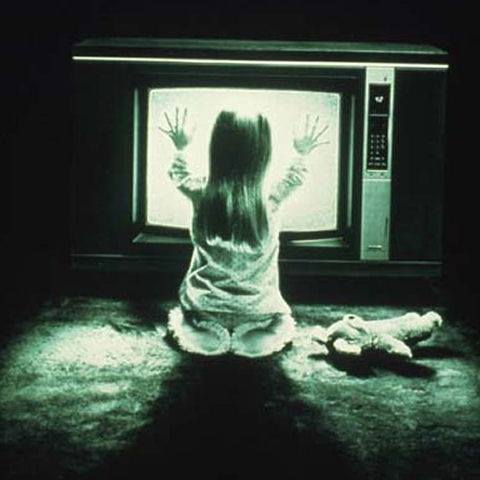

Poltergeist Trilogy Curse
Since the first Poltergeist movie hit the big screen and the iconic horror film trilogy has been scaring the pants off people ever since! Even if you haven’t seen any of the movies, the very image of young Carol Anne kneeling in front of a static-y television uttering those two, horrifying words in that innocent sing-song voice is enough to invoke an innate sense of fear.
But why is it so scary? We know its just a movie, right? Of course, but like any good horror movie classic, the very circumstances surrounding the film itself are wrought with legends and alleged true paranormal activity!
Let’s take a quick look at some of the eerie coincidences that are often cited as evidence of the Poltergeist curse:
Deaths of Cast Members:
Years ago, it was rumored that everyone who worked on the film met an untimely end. Obviously, that isn’t true, but there were at least four notable deaths of cast members that occurred during or slightly after the six year run between the release of the first and last Poltergeist movie. Two of these deaths were not highly unusual. Julian Beck, who played Kane in the second film, died after an 18 month battle with stomach cancer. Will Sampson, who played the shaman died from complications after a heart/lung transplant. Both actors were older, not in good health, and had been battling terminal issues for some time before their respective deaths.
The deaths of Sampson and Beck are still tragic, but not necessarily evidence of a curse. Instead, most people point to the very untimely deaths of two other stars: Dominique Dunne, who played the oldest daughter Dana, and Heather O’Rourke, who played Carol Anne throughout all three movies.
On October 30, 1982, Dunne, who was 22 years old, was confronted at her home by her ex-boyfriend, John Sweeney. Sweeney had come to reconcile, but when Dunne refused, he attacked her, choking her for an estimated 4-6 minutes. Dunne passed out and lapsed into a coma. She died on November 4. Sweeney was convicted of voluntary manslaughter, and served less than six years in prison.
Heather O’Rourke was just 12 years old when she passed away in February of 1988. Believed to have been suffering from the flu since January of that year, Heather continued to get worse until fainting at breakfast one morning. On the way to the hospital, she went into cardiac arrest. It was later discovered that she had an intestinal blockage, a condition brought on by her previously diagnosed Crohn’s Disease, and was experiencing sepsis. She underwent surgery to remove the blockage, but the toxins coursing through her blood stream were too strong and she died on the operating table on February 1st, shortly before the release of the third film. Because she died prior to the release of the film, it is debated as to whether or not she had actually completed filming all her scenes. Her parents claim that all scenes were completed the previous June, but producers claimed that subtle changes had to be made to the script to accommodate her passing.
Other Creepy Stuff:
There were some other interesting things that happened on set or to actors during the filming of the movies, again, most notably the first. During the first movie, Oliver Robins, who played Robbie, nearly died when one of the mechanical clowns malfunctioned and began choking him. At first, it was thought that he was a really good actor, but when he actually started turning blue, it was realized that he was in serious trouble.
JoBeth Williams, who played the mom in the first movie, had her own supernatural experiences off set. She claimed that when she’d go home in the evening, all the framed photos on the walls of her home would be askew. She’d fix them back, but find that the next evening, they’d again be out of place.
The above points are the evidence that is often presented when the curse is discussed, but why would this movie be cursed? Many people believe that there is a very simple reason for this, but very, very creepy!
Remember the pool scene in the first movie, the part where all the human skeletons pop up, confirming that the subdivision was built atop a cemetery where the headstones were moved but not the bodies? Those were real human skeletons. Seriously. At the time, it was much cheaper to purchase human skeletons than ones made of plastic.
Obviously, the cast wasn’t too thrilled with this revelation. A film about the dangers of treating the bodies of the dead with disrespect using real human remains as props is rather ironic and even prompted Will Sampson, who was a medicine man in real life, to conduct an exorcism on set.
Whether or not the souls of those whose bodies were used in the filming of this series came back to wreak vengeance, or whether or not you believe there is any type of curse associated with this trilogy, its still interesting to think about all the coincidences and spooky things that keep popping up with not just this movie, but so many other horror movies out there. In any event, with Halloween barreling its way towards us, the Poltergeist trilogy will inevitably hitting the small screen on at least a few different channels. If you choose to watch, just remember that the pool scene has a couple of un-credited extra actors involved!
9 notes
·
View notes
Text
The Best Horror Movies Streaming On Netflix Right Now
The number of digital platforms on which fans of horror movies can find a good scare is just as frightening as the films they have available to stream. In fact, there is even one that specializes in bringing the best the genre has to offer (and then some). Of course, for those who only have so much time and money at their disposal, settling on Netflix to help deliver the spooks would not be a mistake.
There are enough horror movies available on the popular platform to keep you streaming into the wee hours of the night, mainly because you will not be able to sleep. Among the many fears you would be facing during this binge with iconically creepy classics, modern masterpieces of the macabre, and even some of Netflix’s own ominous originals, one you should not have to worry about is the fear of disappointment.
That being said, we understand that some phobias are more challenging to get over than others, so allow us to be a beacon of despair and point you in the right direction of what the best horror movies currently available to stream on Netflix. We figured that 13 would be an appropriate number, starting with an influential cult favorite that arguably pioneered the “cabin in the woods” thriller.
The Evil Dead (1981)
A weekend getaway and an old cabin becomes an unrelenting nightmare for one man (Bruce Campbell) after his four friends are possessed by an ancient spirit that turns them into grotesque and cruel creatures.
Why It's A Good Option for Horror Fans: Writer and director Sam Raimi became the patron saint of low budget indie horror with The Evil Dead, that remains a timeless classic of astonishing influence that spawned two campy sequels, a brilliantly brutal remake, and a hilarious TV series that serves as a perfect send-off for Bruce Campbell's chainsaw-handed hero, Ash Williams.
Stream The Evil Dead on Netflix here.
Poltergeist (1982)
A family seeks help when their youngest daughter is kidnapped by malevolent spirits that have invaded their suburban home.
Why It's A Good Option for Horror Fans: From producer Steven Spielberg and directed by The Texas Chainsaw Massacre creator Tobe Hooper (well, depending on who you talk to), Poltergeist is an essential haunted house picture for how it expertly taps into traumas that people of all ages an relate to and may lead you to develop new fears as well, such as television static, perhaps.
Stream Poltergeist on Netflix here.
Child’s Play (1988)
A single mother (Catherine Hicks) enlists the aid of a homicide detective (Chris Sarandon) after discovering that the doll she bought for her young son (Alex Vincent) is possessed by the soul of a dead serial killer (Brad Dourif).
Why It's A Good Option for Horror Fans: Before there was Annabelle, there was Chucky, who may not have been the first toy responsible for giving children nightmares, but certainly became every horror fan's favorite of that kind upon the release of Child's Play, a classic slasher but pokes great fun at modern commercialism.
Stream Child's Play on Netflix here.
The Silence Of The Lambs (1991)
To catch a deranged murderer who skins his victims, ambitious FBI trainee Clarice Starling (Academy Award winner Jodie Foster) enlists Hannibal Lecter (Academy Award winner Anthony Hopkins), a former psychiatrist and notorious cannibal, to help get into the mind of a criminal.
Why It's A Good Option for Horror Fans: While the Academy of Motion Picture Arts and Sciences may prefer their choice for the Best Picture Oscar in 1992 not be called "horror," with Anthony Hopkins' chilling performance and breathlessly suspenseful direction by Jonathan Demme, it is hard to imagine The Silence of the Lambs in any other category.
Stream The Silence of the Lambs on Netflix here.
Candyman (1992)
A graduate student (Virginia Madsen) investigating Chicago myths for her college thesis becomes especially interested on the story of a supernatural entity with a hook for a hand whom locals believe can be summoned by saying his name five times.
Why It's A Good Option for Horror Fans: Tony Todd created quite a "buzz" in black horror history as the title character of Candyman, a creation from legendary writer Clive Barker based on the deliciously creepy concept of an urban legend whose existence depends on those who believe in him.
Stream Candyman on Netflix here.
Insidious (2011)
After their eldest son (Ty Simpkins) inexplicably falls into something even doctors hesitate to call a coma, a family (led by Patrick Wilson and Rose Byrne) begins to fall prey to a relentless evil that seems to follow them whenever they try to escape.
Why It's A Good Option for Horror Fans: Director James Wan and writer Leigh Whannell, the dynamic duo behind Saw who have since gone onto great successes on their own, created an indelibly frightening new classic to the haunted house sub-genre with Insidious, particularly for a nearly unprecedented twist that might actually have you thankful when it keeps you up at night.
Stream Insidious on Netflix here.
Sinister (2012)
Desperate for another bestseller, a true crime writer (Ethan Hawke) moves his family into a house where a disturbing murder took place, which he plans to research for his latest masterpiece, only to learn that the truth behind the incident is much worse than he could have imagined.
Why It's A Good Option for Horror Fans: Oscar-nominee Ethan Hawke became an unexpected "scream king" after playing the tragic hero of Sinister, from Doctor Strange and The Exorcism of Emily Rose director Scott Derrickson, which is, arguably, the most ferociously unsettling supernatural crime thriller ever made.
Stream Sinister on Netflix here.
Creep (2014)
An amateur filmmaker accepts a request over Craigslist to film a terminally ill man's final message to his son, but quickly comes to regret the decision when his host's progressively concerning actions lead him to question if he is the one about to expire.
Why It's A Good Option for Horror Fans: Conceived by its own stars Mark Duplass and Patrick Brice (the latter of which also directs), Creep is an underrated found footage gem that mostly lives up to its name (with a almost equally haunting 2017 follow-up that is supposedly the second of a planned trilogy), but the biggest shocker is how mumblecore pioneers Duplass and Brice essentially improvised the entire story from scratch.
Stream Creep on Netflix here.
The Invitation (2015)
A man brings his girlfriend to a dinner party hosted by his ex-wife and her new lover, but is immediately, and unshakably, convinced that something sinister is afoot.
Why It's A Good Option for Horror Fans: As this tenuous, high-wire act from director Karen Kusama progresses, you may not be sure who among these party guests, even Logan Marshall Green's protagonist, is worth your trust, but one thing I can confidently guarantee is is that the final moment of The Invitation will rupture your brain.
Stream The Invitation on Netflix here.
Train To Busan (2016)
An emotionally distant businessman's commute for his young daughter to visit her mother turns out to be a one-way trip into hell when someone carrying a virus turning people into mindless cannibals invites herself on board.
Why It's A Good Option for Horror Fans: Not only is the live-action debut of Korean filmmaker Sang-ho Yeon’s one of the most exciting and clever zombie films in recent memory, but Train to Busan, which has spawned a highly anticipated sequel, also succeeds as a moving thriller about the sacrifices we make for ones we love.
Stream Train to Busan on Netflix here.
Terrifier (2017)
Two beautiful late night partygoers (Jenna Kanell and Catherine Corcoran) are in for the worst Halloween of their lives when they fall prey to an unfriendly clown who has plenty of sadistic trick and treats in store for them.
Why It's A Good Option for Horror Fans: If you ask me, Pennywise has nothing on Art the Clown (David Howard Thornton), the future slasher icon whom the title of Terrifier appropriately refers to for his whimsically morbid imagination and tenacious blood thirst that makes director Damien Leone’s third feature a masterpiece of unapologetic shock and "ugh."
Stream Terrifier on Netflix here.
In The Tall Grass (2019)
A pregnant woman (Laysla De Oliveira) and her brother (Avery Whitted) follow a young boy's cry for help into a large field of high-growing grass, but it soon it becomes apparent that there is no way out.
Why It's A Good Option for Horror Fans: Based on a novella by father/son writing duo Stephen King and Joe Hill, In the Tall Grass is a survivalist thriller with startling fantasy, engrossing mystery, and a menacing performance by "scream king" and The Conjuring star Patrick Wilson that makes this Netflix original one of the coolest surprises in horror of its year.
Stream In the Tall Grass on Netflix here.
Tucker And Dale Vs. Evil (2010)
An idyllic vacation in newly purchased cabin turns into "a real doozy of a day" for a pair of well-meaning hillbillies (Alan Tudyk and Tyler Labine) after an awkward misunderstanding with some young campers leads to a bloodbath.
Why It's A Good Option for Horror Fans: The old slasher trope of shady country folk is turned on its head in a most brilliantly hilarious, yet uncompromisingly graphic, way in Tucker and Dale vs. Evil, which may prove to be perfect way to end your Netflix horror binge: with a morbid laugh.
Stream Tucker And Dale Vs. Evil on Netflix here.
What do you think? Have we captured all the best haunts on Netflix, or is the absence of your own favorite horror flick the scariest thing you saw on our list? Let us know in the comments and be sure to check back for additional information and updates on the freakiest genre in cinema, as well as even more rattling recommendations of movies and TV shows you can stream, here on CinemaBlend.
What is you favorite horror film currently available to stream on Netflix?
5 notes
·
View notes
Text
Three 1970s Horrors Worth Watching (that are not part of this film series)
The Horror by the Decade series started innocuously enough, with someone requesting some recent film recommendations. That got me to thinking about trends, and recommendations from previous decades, and how many movies that were true classics I was familiar with but had never seen, and thus the idea “hey, let’s watch movies from every decade!” came into being.
But obviously you can’t watch every horror movie from every year, so there had to be a selection process in place. Here’s roughly how I’ve been choosing movies:
Search Google for “horror movies {year}” for each year of the decade
Research them a bit and pick out everything that is familiar, historically significant, or seems especially interesting, and put them on a list
Pare the list down to 1-2 of the most interesting titles per year
Look for themes and pair movies up according to theme (since we watch two movies a week)
In order to save time, any movie that both I and @comicreliefmorlock have seen recently/a lot gets knocked off the list. In the 1970s, that means removing three extremely good, extremely important movies, so I wanted to talk about them a bit here.
Follow below the cut for thoughts on Jaws, The Exorcist, and Alien
youtube
Jaws, made in 1975 by Steven Spielberg, is based on a novel of the same name written by Peter Benchley. Richard Dreyfuss and Roy Scheider team up to kill an unusually large and aggressive great white shark that is terrorizing the beach in a quiet New England town.
Fun fact: Until Star Wars was released two years later, Jaws was the highest-grossing movie of all time! This is probably due in part to how much money Universal decided to sink into its distribution and marketing, but the film’s quality has to play a big part too. It really is a magnificent movie and is probably a big part of why people are still scared of sharks.
Some things that are notable about Jaws:
It has one of the most iconic and effective film scores in cinema. Everyone knows the Jaws theme, and it’s been used to basically mean “impending danger!” in a jokey way for...I mean, at least 30 years, because I know that was a meme when I was a kid. I imagine it has been since 1975. That’s just a really impressive feat, and John Williams (yes, the Star Wars guy) deserves acclaim for it.
Music aside, Jaws is an excellent study in suspense and restraint. Technological limitations meant they couldn’t show the shark as much as they’d wanted, so scenes had to be filmed suggestively to ramp up the tension. (You do still get to see a lot of wonderful big scary shark, though, and honestly the effects still hold up pretty well to this day)
The performances are really good, too. The leads have a great chemistry and play off of each other really well. The script was a joint effort, getting passes from several people (including the book’s author), but a comedian Carl Gottlieb got a pass at it, and that humor really helps to elevate the film.
The most powerful thing about Jaws, though, is that it taps into a mythic seed that renders it utterly timeless. There is an echo of Moby Dick in Quint’s character and motives, with a similarly tragic arc. But it draws on something older and deeper, too. The premise of “man-eating wild animal terrorizes a community, a bounty is put on its head, only a hero can kill it” has been a staple of mythology for thousands of years.
Man-eaters are real, and they become the stuff of legend -- dating at least as far back to the monstrous Nemean Lion that could be slain only by Heracles. Historically, there are accounts of man-eating wolves, lions, tigers, etc. terrorizing locals, sometimes inspiring local werewolf legends - you can read about just a few of them here: https://listverse.com/2010/10/16/top-10-worst-man-eaters-in-history/
I think I watched Jaws for the first time when I was 8 (I saw all the sequels too, there was a cable marathon) and I was utterly captivated. I feel pretty confident if I showed it to an 8-year-old today, they would be too. It’s just that kind of movie.
youtube
The Exorcist, released in 1973 and directed by William Friedkin, was based on a novel by William Peter Blatty, who also wrote the screenplay.
The story is about a 12-year-old girl, Regan, who begins acting strangely after playing with a ouija board. Once medical causes are ruled out, her mother turns to two priests for assistance; they come to perform the exorcism and have a harder time than expected with casting out the demon, to say the least.
The film is still considered one of the most frightening horror movies of all time by some, and at the time of its release it was a sensation. Movie-goers were said to have all sorts of reactions, from fainting and vomiting to having miscarriages and heart attacks. Contemporary psychologists even wrote about “cinematic neurosis” in people who had watched the film: https://www.ncbi.nlm.nih.gov/pubmed/1151359
The story crossed a lot of boundaries (even for the 1970s) and you have to bear in mind that this was a major cinematic release, not a grindhouse exploitation film. Most film-goers in 1973 were absolutely not prepared to see an innocent child spouting off vulgarity, urinating on the floor, and masturbating with a crucifix. And some of the practical effects, like the famous head-twisting scene, are still really creepy.
This is one of those movies that’s hard to watch with fresh eyes because it was so influential on all of cinema to follow. If you like demonic possession movies, this is the film that started it all. I know religious people who are deeply afraid of this movie and won’t allow it in their home for fear of inviting real demons, so, that’s the kind of staying power the story has.
** As an atheist, I am not particularly frightened of demon movies, and I suspect I will never fully grasp the real terror of watching something like this for people who believe that these types of things happen in real life. The Exorcist is definitely not the scariest movie I’ve ever seen, but I can respect that it definitely is for many other people.
Fun trivia: The Exorcist is considered by some to be cursed because the cast and crew had an unusually tough time with filming: the set caught fire (but Regan’s room was undamaged), several actors were injured during practical stunts/effects, several people died during filming or in post-production (not on set), and the demon’s voice actor experienced an awful tragedy years later when her son killed wife, kids, and himself: http://www.the13thfloor.tv/2015/12/02/is-the-exorcist-movie-cursed/
The events are all most likely coincidental (and on a long enough timeline, everyone involved with a project will be dead!) but it lends power to the suspicion that this was A Very Cursed Movie That God Doesn’t Want You To Watch, which makes it all the more frightening.
youtube
Alien, directed by Ridley Scott, came out in 1979 and is so powerful that it’s still a popular franchise today, spawning books, movies, video games, merchandise, and more.
The story is essentially a haunted house film set in space. A commercial space crew is woken from stasis by the ship's on-board computer to answer a distress signal, discovering a derelict alien ship and founding a chamber of eggs belonging to an aggressive, parasitic alien creature that infests a crew member with its egg, which later hatches violently from his body, grows up, and proceeds to terrorize the ship.
It's a tense cat-and-mouse game of searching for the alien as it picks off crew members one by one, and the music, atmosphere, and visuals are all compelling, with effects that still hold up pretty well for modern audiences. But what makes Alien especially significant is the performance of Sigourney Weaver as Ripley.
We’d had scream queens before -- female horror protagonists who survive as “final girls” against the mayhem and slaughter -- but Ripley is something different. She is badass, heroic in a way that girls rarely got to see themselves, and laying down a template for strong female characters in future cinema (for better or worse).
The script was reportedly written to be gender neutral, with no assumptions about casting, which allowed Ripley to defy gender norms and expectations. But despite this supposed gender neutrality, there is a definite flavor of female horror in Alien -- which is, after all, a movie about forced impregnation and death at the hands of a decidedly phallic monster.
And that is, I think, probably right at the heart of the film’s sticking power. Science fiction can swiftly become dated as our knowledge of the universe expands, but the horror of Alien isn’t really the aliens so much as what they represent -- and sad to say, sexual violence is something we humans may never understand. Here’s a fun essay on the topic: https://www.newstatesman.com/culture/film/2019/03/forty-years-what-can-ridley-scott-s-alien-teach-metoo-generation
So, there you have it. Three movies we will not be watching in our film series, but which you absolutely should check out if you somehow haven’t seen them.
#horror movies#horror by the decade#horror through the decades#jaws#the exorcist#alien#i love these movies#so much
7 notes
·
View notes
Photo


Jimmy Page - Behind Closed Doors
There are so many cookie crumbs to this story and I truly put as much research into this as my brain could handle. What started as a fun idea, soon turned into a late night adventure of notes sprawled across my bed, snacks to keep the energy going, glasses on; with a pen sticking of my mouth as I thumbed through as many pages of literature that I could get my hands on. There are several parts of this but for the sake of remaining unbiased I will keep it as straightforward and simple as I can. There has been a rumour floating around for fifty odd years, that Led Zeppelin; more specifically Jimmy Page, had made a deal with the devil. In this article, I will break down the events that have lead people to believe such things. In the end, it will remain impartial and will be open to interpretation which we can discuss further.

To begin, let’s talk about Jimmy’s growing idolisation and obsession with Aleister Crowley, famous for being an occult leader and magician. For more back story, Crowley was a British occultist who became known for pioneering the practice of black magic (or magick as he would call it). Aleister called himself Beast 666 and wrote literature on black magic and the occult, making him a major cult figure. He joined a few popular organizations to begin with, but ventured off into his own self created philosophy. Crowley believed himself to be the prophet entrusted with guiding humanity into the Eon of Horus, thus founding the Religion of Thelema.
(Below is the logo of Thelema)
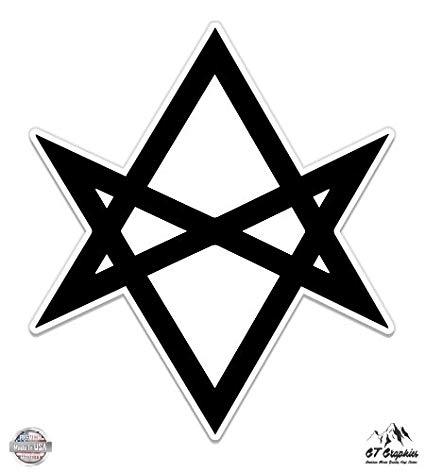
Pictures of Crowley have since been discreetly used in pop culture, as if a small tribute. For example; The Beatles featured Crowley on their album cover art for Sgt Pepper’s Lonely Hearts Club, he can be seen in the back row, if I’m correct. Building off of Page’s affinity for Crowley, which began to noticeably build by the mid to late 60’s, Page financed to own a bookstore in Britain which specialized in selling publishings of the occult and black magik. Needless to say, Jimmy was in deep at this point but still only scratching the surface of infatuation. The bookstore was named “The Equinox” which was also the name of a book that Crowley himself had written on the occult and magic. To this day, Jimmy Page has the second largest collection of Crowley memorabilia and literature, which is no small expense. His bookstore is now closed, but back in the day had been in stock of some very pricey and hard to come by black magik publications.

Another thing I found interesting, was Page being heavily influenced by very iconic blues artists, such as Robert Leroy Johnson (okay, maybe not that interesting, everyone in rock cites him as being the backbone of rock n roll today) nonetheless, Johnson died at the age of 27 from unsolved and suspicious causes. He never became famous while he was alive, but rumour has it that Johnson had also sold his soul to the devil in return for fame, at a crossroads, which Robert mentions in a few songs. A very small, unrelated tidbit of information, but it makes you wonder if our rock star idols gave up more than a normal life, to become internationally loved and recognized.
Around the year 1970, Jimmy had supposedly asked the band to perform a ritual with him, one that would bring them power and something along the lines of everlasting life? I know right, no biggie, just dabbling with some dark forces. Anyone that knows black magik, can tell you that spells like this are not something to be taken lightly or messed with. John Paul Jones was allegedly the only one to not take part in this pact, which you’ll later realize why that makes all of this so much more strange than it already is. If you think about it, had they made such a pact it would make sense. Robert Plant has made it to the list of top 100 best singers of all time in Rock history, not only that but made it to number one (1). Jimmy Page? Well he’s seen as a god and legend by almost every guitar player in the modern world, and has been ranked number two, only one spot behind Jimi Hendrix. John Bonham has been recognized as one of the best double kick drummers in history, quite literally, every drummer looks up to him as also an almost god like figure. As for John Paul Jones? There is no doubt the man is wicked talented, but not nearly as talked about or famed. We can all acknowledge the man has serious talent, and yet seems to be left in the shadows of his peers.
The first evidence of this pact can be seen with the album Led Zeppelin III, between the end of the last song and the paper label is the outro groove written into the vinyl was “So mote it be” on one side and “Do what thou wilt” on the other. The are basic phrases that are the core of Crowley’s belief system. By this point people were determined that Jimmy had become a member of O.T.O , and organization and cult who’s most influential and iconic member was none other than Crowley. More about the organization can be read about in a link below, but it should be noted that they have four pillar rules; one of which is to not speak of the organization to others or discuss the practices of which they studied. A rule, that Jimmy Page is believed to have broken at one point.

The second piece of evidence was apparent with the release of Led Zeppelin IV, when symbolism became a driving force. Inside the album is a painting of the hermit (a powerful tarot symbol), later in life Jimmy would refer to himself as being something of a hermit despite being a major public figure. The album provides no title, and shows no band name on the cover, but on the inside are four brightly printed logos across the sleeve. From left to right, these symbols represent Page, Jones, Bonham and Plant. Page has said in interviews that the symbols (for the most part) were taken from Rudolf Koch’s 1955 Book of Signs. Plant’s symbol is probably the easiest to decipher - as it is the feather of truth and courage, from the origins of Egyptian goddess Ma’at. John Bonham’s is believed to be either a drum kit, or the symbol of trinity of a family unit (meaning father, mother, child). John Paul Jones, which was likely picked by Jimmy, was the a celtic sigil for confidence and competence. However, Jimmy’s logo has always been the hardest to breakdown and figure out. While most people believe his logo represents saturn (which controls the Capricorn sign, Jimmy is a Capricorn so it would make sense), there is a certain level of mystery behind it. Page has famously said he will never tell anyone what it means. Thought Plant has once said that Page revealed the full meaning of all four signs, including a detailed discussion of what Zoso meant. Admittedly, Plant expressed he was too drunk to remember by the next morning, and when he had asked Page about it again, page replied with saying he couldn’t/wouldn’t discuss it. Now this could very well be Jimmy’s antics, or just general mysterious persona, or perhaps he simply cannot discuss or reveal information. Perhaps, this is the one of the four pillar rules of O.T.O that Page had broken. Jimmy is an all around very private person, who very rarely, if at all, talks about his religious or spiritual beliefs or practices.

It is worth noting that Sandy Denny (pictured below) of Fairport Convention, the voice on The Battle of Evermore track, was given her own sigil. The logo is translated to Godhead or the power of female.


According to Pamela Des Barres, Pages girlfriend of this era, has said that at this point Jimmy got very deep into the studying of Crowley, and had even asked her to search San Francisco and Los Angles for Crowley memorabilia. She had not fallen short on this task, and managed to dig up some very impressive artifacts, manuscripts, and even “magical” robes that Crowley has worn. In 1970, around the time of the ritual, Page had dropped a large chunk of cash to acquire Crowley’s mansion, Boleskine, located on Loch Ness. The home, once owned by Crowley, had a large history of suicides and an even bigger turnover rate of employees as they found the home to be no doubt inhabited by dark entities. Regardless of what one may believe, the house holds a sinister vibe. Page later sold the home in 1992, and had actually been very wary of ever living there and had left the estate in a caregivers possession. Of the 22 years that he had owned the house, he only spent 6 weeks in total living there. In 2016, the house unexplainably burned down. (pictured below is Jimmy at the mansion)


Now this next part is where shit gets bonkers, so to speak, the rest so far has been rumours and back stories and alleged encounters. Just a man with an obsession, and depending on your personal beliefs, you may find that he took his practices too far. Perhaps his intentions were pure, but looking at his life in general, what did Jimmy have to sacrifice to become quite literally a noteable person in history. Well let’s see.
Introducing Kenneth Anger; a fellow Crowley disciple and filmmaker, drug taker and subversive. He spent most of his time drawing magic circles, burning incense and chanting spells in Enochian - trying to do a real ritual exorcism. Plans for his film Lucifer Rising began to fall apart when Bobby Beausoleil (lead actor) - had to quit. Bobby, who later stole rough cuts and cameras from Anger would soon regret this. To take revenge, Anger supposedly made a talisman to curse Bobby. Within a year, Beausoleil had ended up convicted of murder with a life sentence for the murder of Sharon Tate as part of the Manson family murders. Wild, I know. Possibly just a coincidence, or even just a tall tale.
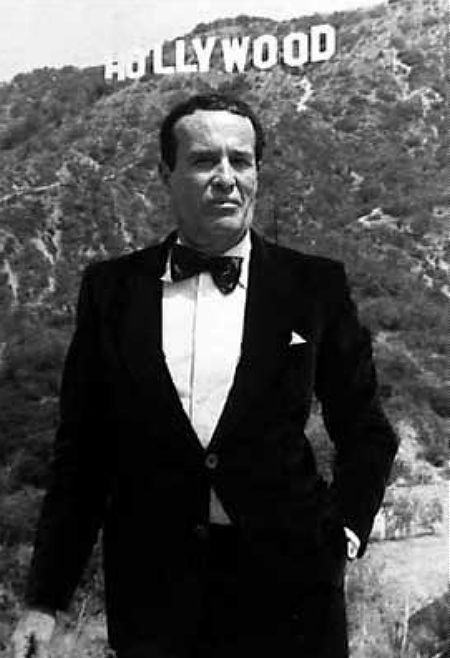
Cue Jimmy Page, who had agreed to do the soundtrack for Angers film, and the music Jimmy had produced is exactly what you’d expect. Dark, eerie, and perfect for a film of satanic proportions. Some of which can actually be heard in the intro for “In The Out Door”, his melancholy and devilish sound coming through in the song “In The Evening”. Kenneth and Jimmy had a love/hate relationship, and what started as a mutual appreciation and dedication to Crowley’s practice and image, soon turned to ugly turmoil just as quickly. Anger moved into Boleskine, where him and Page shared a love for Crowley memorabilia. However, as their friendship deteriorated, Anger was asked to leave the Crowley mansion. At the height of Led Zeppelin’s career, Jimmy had pulled out of the film project in 1975. Allegedly, Anger soon stated that he had cursed Page and Zepp with a major spell, a spell so big that it took all of Crowley’s teachings he could muster up, to cast upon them.
Almost immediately, the band started to experience turbulence and the eventual downfall of their career as one tragedy after another struck them to the core. Robert Plant was in a car crash, plunging off a cliff in Greece in 1975, nearly killing himself, his wife and his son Karac. Which meant cancelling the Physical Graffiti tour and having to record in a wheelchair. The make up tour was littered with negative events starting with Plant getting Laryngitis. Followed by ticketless fans in Cincinnati rioting and storming the gates. In San Francisco, manager Peter Grant and John Boham had gotten into a fight with Bill Graham, and nearly beating a Bill Graham employee to death. Both Grant and Bonham narrowly escaping serious charges and incarceration. Karac eventually fell ill, and no amount of money would make him better, as doctors had no idea what was wrong, by 1977 Karac had passed away and the tour was cancelled. At this point, Plant had quit the band and music in general in response to Page and Jones not showing up to his sons funeral.
Around this time, Page was nearly comatose on a daily basis due to a crippling Heroine addiction, and Bonhams alcoholism was raging out of control, becoming increasingly violent and unpredictable. In 1978, Sandy Denny, the goddess of the Battle of Evermore, drunkenly plunged down a flight of stairs; breaking her neck and died. The tip of the iceberg was the incident that occurred in September of 1980. Handlers had tucked Bonzo into bed after a band rehearsal, following a night of heavy drinking; assuming he would be okay, he’s done it a million times before, right? But as well know, John tragically died in his sleep from asphyxiation. It’s worth mentioning, that in the middle of all of this mayhem, John Paul Jones had remained completely untouched. While the loss of Karac and Bonham had affected John, being as they were family, he was never really directly affected. Could this be because he stayed as far away from the pact as possible? Could these events be natures way of taking something, in return for giving something such as power? Is this all the work of Angers alleged curse?
Robert Plant once addressed these very claims, as some people point fingers at Jimmy being the cosmic reasoning behind the passing of Karac and Bonham. Though, he says it’s a cheap shot. This is what Plant had to say about the matter - “The comments about how it was all connected with Jimmy’s dalliance with the dark side or whatever, that was cheap. I’ve never shared the preoccupations with him and I don’t really know anything about it. Fate is already written”. I suppose it has less to do with whether Page “sold his soul” and more to do with the possible repercussions of playing against nature, and whether such practices have a domino affect. The piling strange circumstances does make one wonder how involved Page really was, and how much the involvement took a toll on the band. Just how much of it can account for Led Zeppelin’s massive success, to the point of making history in music forever (everlasting life?). At the end it could all very well just be a bunch of mumbo jumbo non-sense. I am curious as to what you all think, feel free to leave comments or shoot me a message!
*Note; Do not take this too seriously, it’s all speculation and open for interpretation. Below are some interesting sites that I used in my search!
Resources:
https://forums.ledzeppelin.com/topic/15027-jimmy-and-crowley/
https://en.wikipedia.org/wiki/Aleister_Crowley
https://carwreckdebangs.wordpress.com/2015/06/09/aleister-crowley-jimmy-page-and-the-curse-of-led-zeppelin-when-myth-magick-and-weird-facts-collide/
https://en.wikipedia.org/wiki/Ordo_Templi_Orientis
https://zososymbol.com/
#uhm I think I covered all the basis#im SO nervous to post this omfg#jimmy page#led zeppelin#robert plant#john paul jones#John Bonham#myposts
110 notes
·
View notes
Text
𝗞𝗼𝗻𝗴 𝗛𝗼𝗻𝗴𝗷𝘂𝗻 & 𝗟𝗶 𝗝𝗶𝗻𝗴𝗹𝗼𝗻𝗴 ♡⚘




—match icons
#tianbao#tianbao fuyao lu#legend of exorcism#tianbao donghua#icons#match icons#kong hongjun#li jinglong#longjun icons#longjun#novel bl#boys love#fei tian ye xiang#feitian#chinese novel#danmei
313 notes
·
View notes